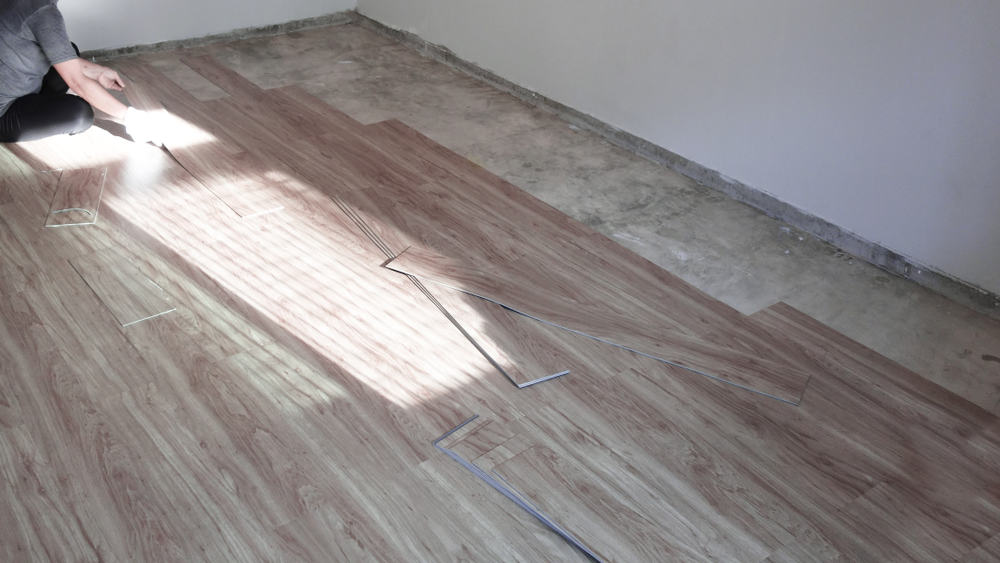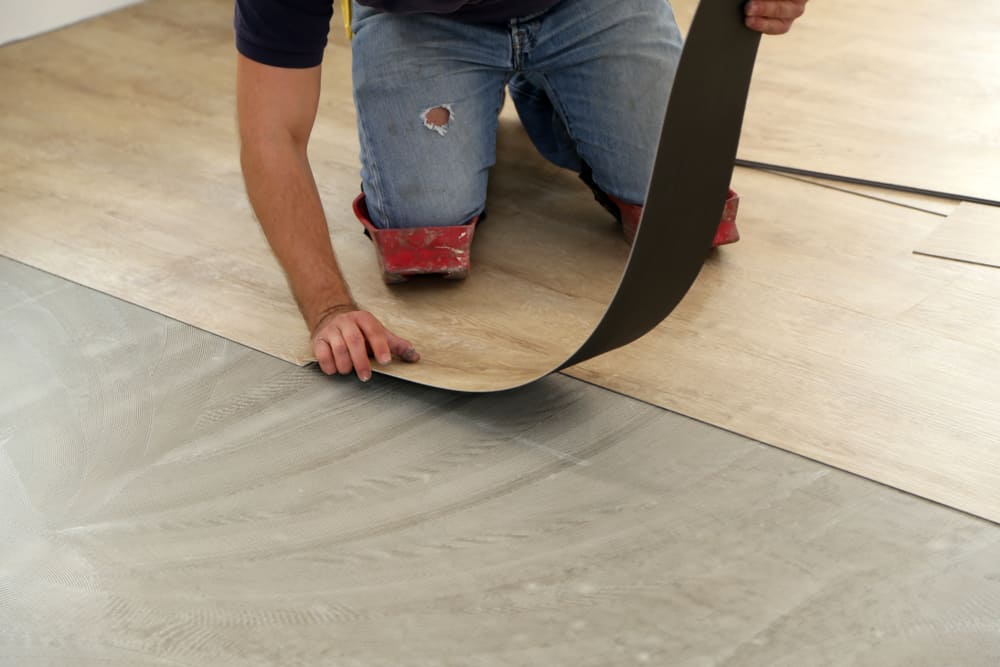How To Clean Lifeproof Vinyl Plank Flooring
Do you prefer vinyl plank flooring due to its elegant and beautiful design? Are you one of those homeowners who go for vinyl plank floor because it is less expensive than hardwood floors? Well, you need to be aware that vinyl planks can be problematic.
Some of the issues you might experience include stains, scratches, discoloration, cracking, peeling and other installation-related failures. Since most people aren't aware of this, we'll discuss problems with vinyl plank flooring and share a solution to each situation.
7 problems with vinyl plank flooring

So, what are these problems that can cause your vinyl plank flooring to look unattractive? Let us start by knowing the installation-related issues. They might result from the quality of your planks, the kind of glue you use, and the installation technique.
- Vinyl planks cupping, curling, and dimensional fluxes – If you fail to check and moderate the room's moisture level and subfloor, you might experience these changes. However, it can only happen to vinyl flooring that expands and contracts under certain temperature levels.
- Warping – when there are temperature changes, your vinyl plank flooring might expand, and that's what we call warping. You might experience it during the installation process if your floor is exposed to direct sunlight. Also, warping can happen if you use glue-down planks and there is water spillage.
- Peaking – Your floor will experience peaking when two vinyl planks crushes and their joints raise. Most likely, peaking takes place when there is no space between the planks to allow contraction and expansion.
- Mildew and mold – Vinyl planks with mildew and mold could result from high moisture and water leakage. If you didn't know, mildew and mold are types of fungi that can spread fast yet so challenging to remove. In fact, if you don't attend to them, they can be harmful to your health.
Some issues that you might experience but not related to the installation process include:
- Scratches – If you install vinyl plank flooring in your kitchen or any other high-traffic, you can expect a problem like scratches. Undoubtedly, your house has many items that can cause the floor to scratch up and make it appear dull. For instance, dirt that you drag from outside every day can scratch your beautiful vinyl plank floor. Also, pets, chair legs and high-heeled shoes can lead to floor scratching.
- Stains and discolorations – Vinyl plank flooring is prone to stains and discoloration, especially if you spill drinks and food on it. The floor absorbs things quickly, and removing them can be tiresome. In some cases, the discoloration can become permanent, especially if you don't clean up immediately.
- Cracking and peeling – Over a while, vinyl plank flooring tends to experience cracking and peeling. Hence, don't be surprised if this is already happening to your floor. But how can you tell that your floor has this problem?
Well, you'll see the glue around the corners curling and wearing out. This gives your floor an unattractive and unpleasant look. Also, dirt will accumulate beneath the planks, and if you don't fix it sooner, the problem will only worsen.
How to fix problems with vinyl plank flooring

Now that you already know potential problems that vinyl floors might pose, let's find out the solution for each situation.
Moderate moisture level of the subfloor and room
The best way you can avoid dimensional instabilities, cupping and curling is by moderating moisture levels in your room. Since temperature change can highly impact your vinyl flooring, you need to consider where you want to install it. However, you're not limited to install vinyl planks in cooler areas like the bathroom and warmer spaces like the kitchen because it's a versatile material.
All you need to do is prevent moisture from seeping into the planks due to vinyl's soft material. Additionally, it would be wise if you select your subfloor carefully because a soft one might dent pretty fast. This is especially when there is heavy foot traffic in your house.
Trim the vinyl planks along your walls
You might not eliminate peaking instantly, but you can create space by removing moldings and trimming planks along the wall. As a result, your vinyl floor will get the space to expand, especially at doorways where moldings form.
Do essential maintenance on your vinyl floor
If you do regular maintenance, you'll not only avoid vinyl planks warping but also stains and discoloration. For instance, whenever there is a spillage on the floor, it would be best if you wipe it immediately.
We insist on that because substances with harsh pH levels like lemon juice, oil, and vinegar can result in rough-looking stains and discoloration. Besides, don't allow spills to soak since it could lead to permanent stains. Also, ensure that there is no excess food or liquid left by using a damp rag to clean it up.
If your vinyl plank flooring already has some stains, you must use the right cleaning solution. Moreover, avoid using highly abrasive scrubbers like steel wool, abrasive sponges and other rough materials because they can easily scratch your beautiful floor. Instead, you can use a mop or soft brush if you want to do deep cleaning.
Never cleaned vinyl plank flooring before? It is pretty easy with the right tools. You can also practice the following to keep your vinyl plank floor at its best:
- Place a throw rug or doormat at every entrance of your door to catch dirt that could damage vinyl floors.
- Avoid applying liquid or paste wax to non-wax vinyl plank floors. Instead, use a commercial sealant to restore the shine.
- At least every day or two, do a dry mopping or vacuum cleaning to remove all kinds of dust, debris, and dirt that could cause tiny scratches.
- After cleaning, always allow your vinyl floor to air-dry
- Avoid dragging your heavy furniture or appliances across the floor; instead, use a plywood sheet to prevent tears and scuffs.
Practice proper ventilation
Most probably, your daily domestic activities are the key contributor to the growth of mildew and mold on your floor. So, consider having proper ventilation in areas like the kitchen, bathrooms, and laundry rooms. If you're in humid climates, it would be best to use dehumidifiers and AC units. However, you need to clean and check them periodically because they can produce moisture as well.
Another way to prevent your vinyl floor from holding moisture is by opening windows after washing dishes, showering, and cooking.
Request your guests to take off their shoes
If you don't want to deal with scratches on your vinyl plank floor, request your guest to remove their shoes. By doing that, shoes like heels cannot destroy your vinyl plank floors by leaving scratches. Also, you'll prevent dirt from getting into your house. For guests who are uncomfortable taking off their shoes, you can give them clean indoor slippers.
But what if your house has scratches already? Here is what you can do to get rid of them:
- Mix a little of your dishwashing soap and warm water in a bucket, and use a sponge to clean the planks with scratches. Ensure that there is no dirt inside the scratches and leave them completely clean to dry.
- Use medium-grit sandpaper to rub off the scratches. However, do it gently to avoid ruining the rest of the floor. If you follow this step carefully, you'll remove most of the scratches.
- After that, lightly rub the area with scratches with a finer sandpaper, but this time around, do it in a circular motion. Once you're done, wash the area with a fresh sponge.
- For a shinier look, you can wax your vinyl plank with a high-quality compound. However, this does not apply to non-wax floors.
- Lastly, ensure that the scratches are invisible by using a clean cloth to wipe the area.
Deal with your vinyl floor's peeling and cracking
Before you decide on replacing or removing your peeling vinyl plank floors, you can fix them using the following steps:
- Place a slightly larger aluminum foil on the affected plank, and use a standard iron to apply heat. It would help if you did that to soften the remaining adhesive.
- Peel the plank corners all the way back and apply a new thin layer of adhesive. We recommend using a small adhesive because you don't want to see ripples beneath the planks.
- Use a rolling pin to press the plank down to the edges. By doing this, your vinyl will align uniformly with the subfloor and squeeze out the excess adhesive.
- Remove excessive adhesive with a damp cloth.
Conclusion
While vinyl plank flooring is an excellent way of improving the look of your home, it can be problematic. The good news is that you have the ability to fix these problems. However, doing an early fix when you see scratches on your vinyl floor will save you a lot of money. If you keep the floor in good condition, you'll undoubtedly love its durability.
Your vinyl plank floors can serve you for years, but you'll need to take some time off to do regular maintenance. Did you find this article helpful? Would you mind leaving a comment to let us know? Also, if you have any of the problems above at hand, please tell us whether our solution can fix them.
How To Clean Lifeproof Vinyl Plank Flooring
Source: https://www.whatisvinyl.com/problems-with-vinyl-plank-flooring/
Posted by: hartidowed.blogspot.com

0 Response to "How To Clean Lifeproof Vinyl Plank Flooring"
Post a Comment